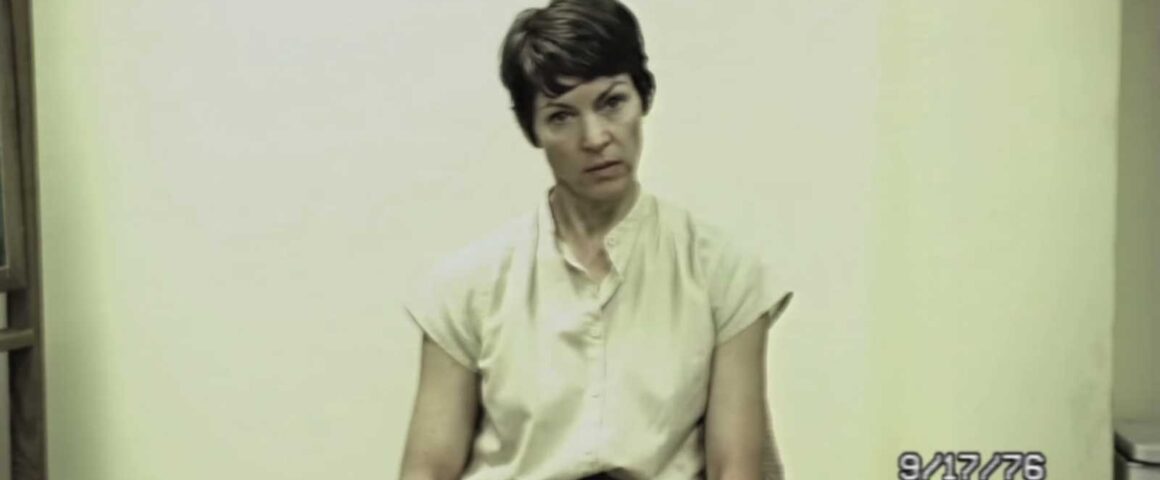The eponymous academy around which The Atticus Institute revolves, as we are told early on (via ominous letters on the screen, an info-dump technique frequently employed by mockumentary and found footage films), was founded by Dr. Henry West (William Mapother, “I Origins”) in order to study “psi-related phenomena,” such as clairvoyance and telekinesis, until it was shut down in 1976. Naturally, this movie shows us what happened that terrible year that changed the lives of all those who witnessed it forever.
Told through a mixture of interviews with Dr. West’s family and former colleagues and footage from when it was still in operation, The Atticus Institute offers a mixed message about being careful with what you wish for and whose hands you let your work fall into, in addition to dragging out many old horror tropes and just a few novel ideas.
The first parts of the film are its best; the footage looks old, the interviews are believable and sad, West’s daughter (Suzanne Jamieson) plants a detail that doesn’t pay off until its final moments and the three other doctors display genuine passion for their work. While they all share valuable information, one in particular, who I personally dubbed Dr. Exposition (John Rubinstein), provides us with the majority of the context we are given to understand Dr. West’s parapsychological research and the severity of its getting out of hand. Dr. Exposition is the one who preemptively answers the audience’s questions regarding outside variables, researcher bias, lucky guesses and false positives. He is also the one who, in regards to what is initially the most promising subject the institute has ever seen (Judith Winstead, played by Rya Kihlstedt), gets the military involved.
This is what sets The Atticus Institute apart from other movies in its genre. Once Dr. West’s team realizes that Judith is not talented, but possessed, and that their loved ones are in danger, the military comes along not to help defeat the evil force inhabiting her, but to weaponize it.
While certainly a unique take on this type of story, this is where the plot starts to fall apart. The military’s response goes beyond the stubborn pigheadedness typically seen in movies where they are supposed to be one dimensional bad guys and into a realm of implausible stupidity. We are even told that Judith, a middle aged woman whose family has abandoned her, is tested “like an atomic bomb.” The president gets involved, Judith is essentially tortured, and, if you’re still willing to suspend your disbelief at this point, just wait until you see the way they plan to get the “evil” inside of her (which is visible in some photographs and even has a measurable molecular composition) out of the institute.
Most frustrating of all is the old, too-familiar imagery that is trotted out in front of audiences instead of trying for more genuine scares. For example, one of the first images in the film is a priest wearing a gas mask. During a pyrokinetic test, Judith makes candle flames burn sideways, then lights the candles up again once they have been extinguished. Additionally, the first night that Judith spends in the institute (during which she is left alone with a young junior staff member, even though she has already demonstrated worrisome abilities) we are even made to watch her, clad in a white nightgown, slowly and silently sit up in her hospital bed and stand in the middle of a room while chaos swirls around her.
That being said, some of the more interesting scares actually made me jump and gasp in delight. For example, at one point Judith, catatonic as always, loudly and methodically bangs on a table, making a dreadful sound that the doctors ask her to stop. After she does, still another chilling bang is heard. Another good scare is when someone standing inside a room with Judith is asked to picture something that is not in that room in their mind. Whether or not Judith is able to draw what he is picturing can help prove or disprove her psychic powers. When Judith draws a crude four leaf clover rather than the hammer the man had pictured and mouths something initially indiscernible to one of the researchers sitting across from her (Sharon Maughan), the researcher bursts into hysterics and attempts to attack her. The reason why this happens is one of the better details in the entire film.
Initially fun but ultimately frustrating, The Atticus Institute is an attempt to breathe life back into a tired type of horror movie that, at this point, should probably stay dead.




'Movie Review: The Atticus Institute (2015)' has 1 comment
January 23, 2015 @ 9:01 pm Tobit
At least a movie about military controlled ghosts sounds cool.